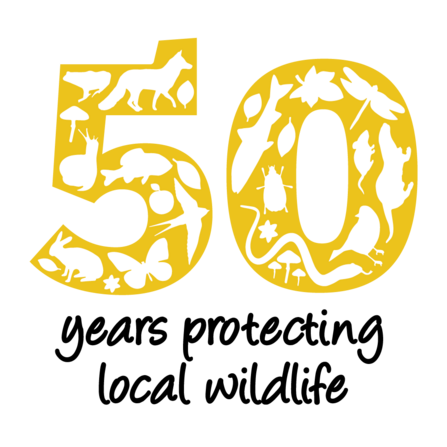
The rest, as they say, is history, but whilst many would argue Creme Eggs have got smaller, Northumberland Wildlife Trust has evolved into one of the largest and most influential conservation charities in the region - standing up for threatened species and wild areas way before it was considered fashionable to do so.
To mark the anniversary year, the Trust will be holding a series of activities (until December 2021), starting with a virtual 50th anniversary celebratory event hosted by Chief Executive Mike Pratt on Thursday 6th May from 6:00pm - 7:30pm.
Over the course of the one-and-a-half hours, wildlife supporters will be able to find out more about red squirrels, water voles, ospreys, the ‘wilds’ of Kielder, how the Trust is engaging with young people, the ambitious Catch My Drift project on its 185 hectare East Chevington reserve and its plans for the future.
The event will close with a question and answer session with Mike Pratt, Northumberland Wildlife Trust Chief Executive and Duncan Hutt, Trust Director of Conservation eager to answer questions on anything wildlife and conservation related.
Click here to register for the event.
During the Trust’s 50 year history, there have been many milestones including the acquisition of the ex-opencast site at Low Hauxley in 1983 and its transformation into an internationally recognised haven for birds, followed by the acquisition of Whitelee Moor in 1999 - a rare blanket bog and heather moorland and one of the largest nature reserves managed by any English Wildlife Trust.
In 1998, the wildlife charity played a key role in the compilation of the Red Data Book of Northumberland - a list of rare and threatened species which formed the basis of the Northumberland Biodiversity Action Plan.
The year 2000 onwards saw the wildlife charity lobbying for more marine protection and which led to the passing of the Marine Act in 2010, and the successful 2014 Hauxley Land Appeal which allowed the Trust to purchase additional land adjoining its Hauxley reserve which formed part of its plans for the new Hauxley Wildlife Discovery Centre, which opened in June 2017.
To date, the Centre has won nine awards for community benefit, sustainability, architecture and tourism, including the North East Bronze Award for Small Attraction of the Year and which, prior to the 2020 and 2021 lockdowns, was welcoming over 100,000 visitors.
The Trust has clocked up over one million volunteering hours, introduced thousands of children and young people to green spaces and managed over one thousand projects to protect hundreds of species.
In addition, Vice President Angus Lunn has spent over 50 years identifying, restoring and extending the bog lands of the Border Mires transforming them into the best and biggest peatland restoration in the UK, not to mention Trust President Conrad Dickinson raising its black and white badger flag at the South Pole with Prince Harry in December 2013. Not bad for a charity which started life in a Portakabin behind the Hancock Museum in the centre of Newcastle.
Speaking about the past 50 years, Mike Pratt, Northumberland Wildlife Trust Chief Executive says: “As we celebrate our 50th anniversary year, we must give a nod to our late founder and Vice President Tony Tynan OBE, one of the conservation pioneers of the 1960s, because, without him, the Trust may not have been what it is today.
“As an organisation we have achieved so much over the past half century, helping wildlife in all its wonder and beauty, much of which wouldn’t have been achieved without the people who have funded, worked or volunteered tirelessly for us and with us.
“There is still so much to do, and we must do even bigger and better things if our planet is to survive. Our aim is to spend the next 50 years continuing to be nature’s local voice but only louder and more forceful ensuring earth is wildlife rich for the future.”
